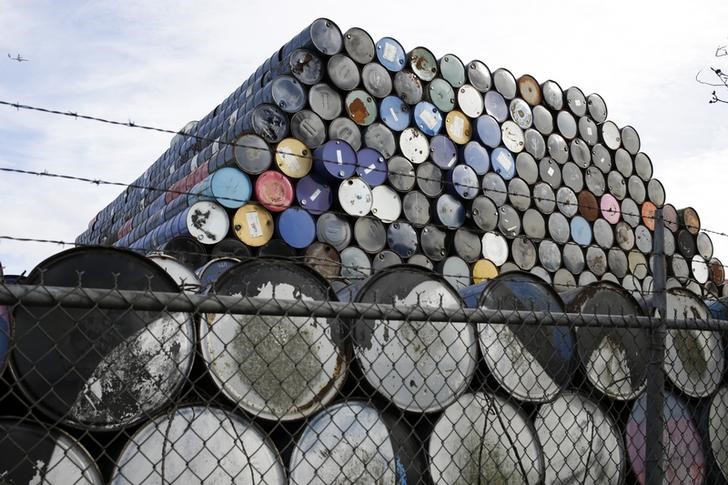Investing.com – West Texas Intermediate pared gains in North American trade on Wednesday, after data showed that oil supplies in the U.S. registered a surprise inventory build, while gasoline and distillate stocks both declined less than forecast
Crude oil for May delivery on the New York Mercantile Exchange gained 45 cents, or 0.88%, to trade at $51.45 a barrel by 10:34AM ET (14:34GMT) compared to $51.77 ahead of the report.
The U.S. Energy Information Administration said in its weekly report that crude oil inventories rose by 1.566 million barrels in the week ended March 31. Market analysts' had expected a crude-stock draw of 0.435 million barrels, while the American Petroleum Institute late Tuesday reported a 1.83 million barrels decline in stockpiles.
Supplies at Cushing, Oklahoma, the key delivery point for Nymex crude, increased by 1.413 million barrels last week, the EIA said. Total U.S. crude oil inventories stood at 535.5 million barrels as of last week, according to the press release, which the EIA considered to be “near the upper limit of the average range for this time of year”.
The report also showed that gasoline inventories decreased by 0.618 million barrels, compared to expectations for a draw of 1.422 million barrels, while distillate stockpiles fell by 0.536 million barrels, compared to forecasts for a decline of 1.016 million.
On the ICE Futures Exchange in London, Brent oil for June delivery traded up 49 cents, or 0.90%, to $54.66 by 10:37AM ET (14:37GMT), compared to $54.94 before the release.
Meanwhile, Brent's premium to the WTI crude contract stood at $3.23 a barrel by 10:38AM ET (14:38GMT), compared to a gap of $3.14 by close of trade on Tuesday.
Elsewhere on Nymex, gasoline futures for May slipped 0.4 cents, or 0.2%, to $1.720 a gallon, while May heating oil rose 1.7 cents to $1.609 a gallon.
Natural gas futures for May delivery dipped 1.9 cents to $3.312 per million British thermal units.
Oil has been well-supported in recent sessions amid increasing confidence that output cuts by major global oil producers are beginning to rebalance the market.
OPEC agreed in November last year to curb its output by about 1.2 million barrels per day between January and June. Russia and 10 other non-OPEC producers have agreed to jointly cut by an additional 600,000 barrels per day.
In total, they agreed to reduce output by 1.8 million barrels per day to 32.5 million for the first six months of the year.
A joint committee of ministers from OPEC and non-OPEC oil producers will meet in late April to present its recommendation on the fate of the pact. A final decision on whether or not to extend the deal beyond June will be taken by the oil cartel on May 25.
